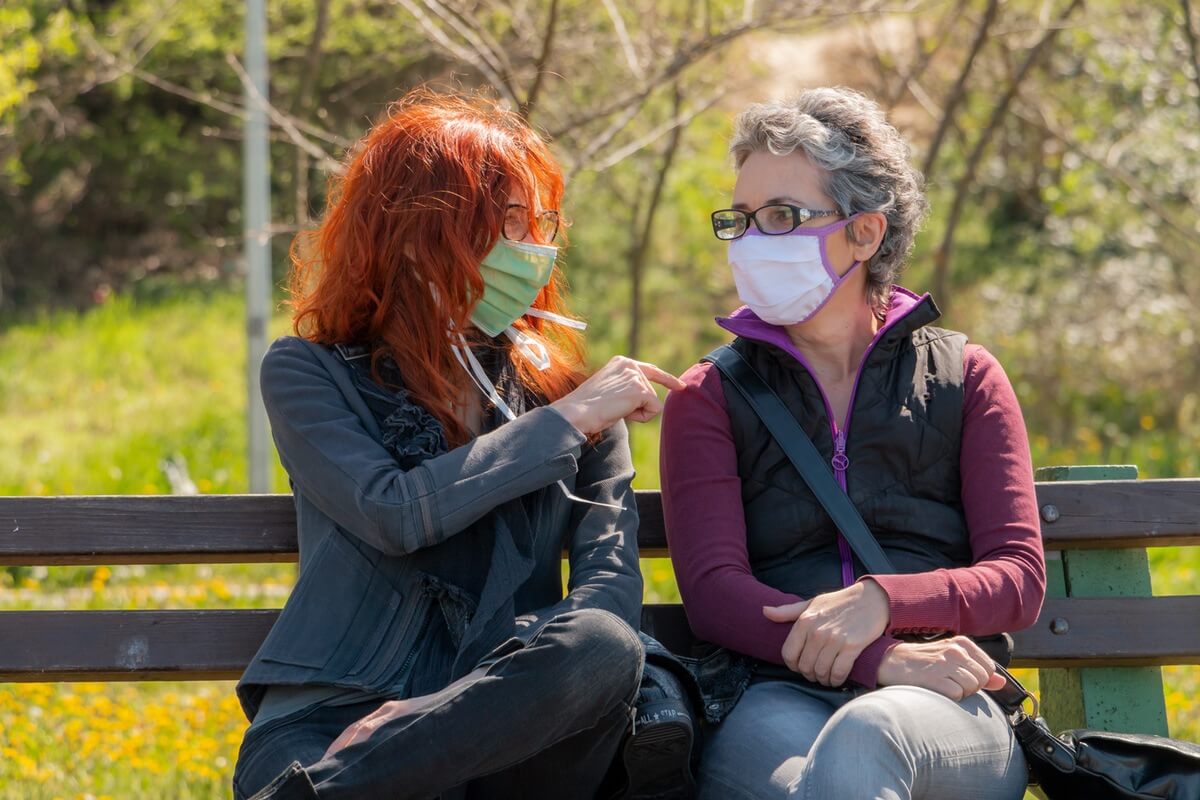The Corona-Virus emergency has made life more dangerous and difficult for people world-wide. However, the extraordinary challenges experienced by the hearing impaired and deaf populations have not been addressed adequately to date by the media.
In the article “Hearing Loss, Conversation and the Brain”, posted on the Bellows Hearing Institute Website Blog, August 23, 20191, listening is defined as an “active or intentional behavior involving the brain’s ability to decode and process communication.” There are therefore special needs for 20% of the United States population, approximately 48 million Americans, according to Sofia Enamorado’s article, “The Growing Population with Hearing Loss”, January 24, 20182. Many people over the age of 60 are at a higher risk of contracting COVID-19 as warned by the Center for Disease Control in 2020. The impact of hearing loss and aging in combination can therefore have many negative social affects on verbal communication between partners and family members.
Strategies utilized to improve communication with a hearing impaired individual have been well-documented in the literature. The Cleveland Clinic in 20193 suggests the following tips to improve dialogue:
- Gaining the listener’s attention.
- Maintaining eye contact so the facial expressions can be conveyed.
- Keeping hands away from face.
- Providing good lighting.
- Speaking naturally and pausing speech when needed.
- Rephrasing a message.
- Reducing background noise in the environment.
Now that society is facing COVID-19, hearing loss factors have been further compounded by an individual’s inability to read visual and contextual cues due to mandatory social distancing and the proper usage of protective face masking. New effective strategies can be exercised to assist the hearing impaired caught in this emergency. The Hearing Association of America4 in 2020 has proposed many of the following coping tips:
- Take a careful inventory of communication supplies. Be sure to stock up on all necessary accessories to keep hearing aids in good functional condition. These items can be easily replenished by contacting an Audiology provider. Hearing aid batteries, wired receivers, dry aid kits, cleaning picks / brushes / wires, magnets for ease of dexterity, battery caddies and dry wiping cloths are still readily available.
- Explore telehealth options by contacting an Audiology professional. Utilizing face-time calling strategies are particularly effective for hearing impaired individuals to facilitate lip and speech reading without any mask protection. Closed caption phone communications enhance comprehension since the dialogue is read and not auditorily received.
- Utilize curbside services when warranted to avoid unnecessary human exposures. Take advantage of cleaning, maintenance and repair services that are available to keep amplification, assistive listening devices and desiccants in optimal operational and clean conditions.
- Consider the utilization of back-up older hearing aid devices, remote controls, and assistive listening devices, such as pocket-talkers or personal amplification products, during an emergency crisis with their appropriate fresh battery supplies and chargers.
- Prepare on “Emergency Communication Kit” with a six month supply of fresh batteries and cleaning tools for impending travel, surprise hospitalizations, earthquake or other critical situations.
- Invest in a transparent FDA approved face mask if available. If such a product is unavailable, follow instructions to make a DIY project to produce an adequately protective face mask with a “clear window”. This enhanced strategy can preserve the “integration of speech cues”5 and can potentially enhance the dynamics of communication while protecting the individual from airborne viruses and informationalerting the presence of any potential physical dangers.
Audiologists and other healthcare providers remain committed to serving the hearing impairedpopulation with service, support, and education to promote the importance of hearing health and communication during these uncertain times. The hearing impaired population is also encouraged to follow the CDC and local public health officials as warranted.
References:
1 Hearing Loss Conversation and the Brain; Posted in Blog, August 23, 2019 Bellows Hearing Institute.com
2 The Growing Population with Hearing Loss; Sofia Enamorado, January 24, 2018 https://www.3playmedia.com/2018/01/24/growing-population-hearing-loss/
3 Hearing Loss: Tips to Improve Communication with People with Hearing Loss-Cleveland Clinic. https://my.clevelandclinic.org/health/articles/4050-hearing-loss-tips-to-improve-communication-with-people-with--hearing-loss
4 7 Tips to Maintain Hearing Health Care Amid COVID-19 – LWW Journals Shari Eberts,https://journals.lww.com/thehearingjournal/blog/breakingnews/pages/post.aspx?PostID=364
5 The Contribution of Different Cues of Facial Movement to the Emotional Facial Expression; jov.arvojournals.org https://jov.arvojournals.org/article.aspx?articleid=2121344





